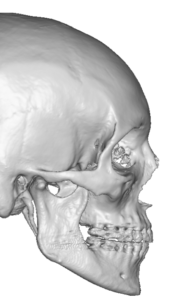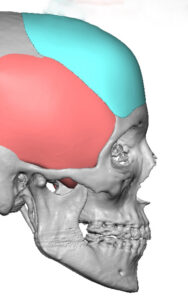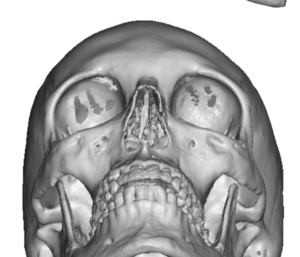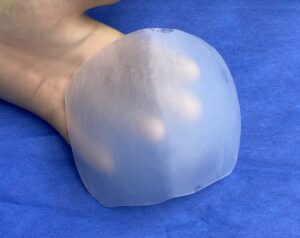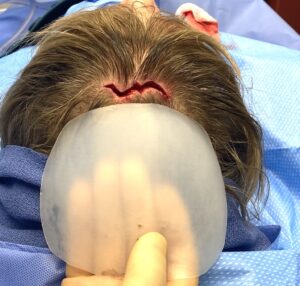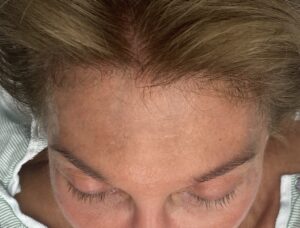Background: There are distinct well known shape differences between the female and male forehead. While it is a broad near featureless facial area it still has gender specific characteristics. Compared to the male forehead the female forehead has a more vertical slope to it (partially because it lacks any significant brow bone prominences) and has less prominent bony temporal lines. (giving it a more round softer appearance)
When designing a custom forehead implant for females the one feature that is most easily created is the slope. Established in the profile view the slope of the forehead is determined by the angle from a vertical line drawn up from the brow bones. A truly vertical forehead (zero slope) is rare and is not usually the most aesthetic. Female forehead verticality infers that that is some slope even if it is slight. (around 10 degrees) It is important to know where the frontal hairline is on the frontal bone as that plays a key role in establishing the slope as well as the maximal thickness of the implant in the upper half of the forehead. The slope angulation is ultimately determined by the line drawn between the brow bones and the edge of the frontal hairline.
Once the slope is set then the shape of the forehead implant from side to side can be established. In females this is usually going to have a rounder shape with the temporal lines set back from the central maximal area of projection. Whether the implant design needs to extend past the bony temporal lines onto the temporal muscle fascia depends partially on the amount of forehead projection created and whether any natural temporal hollowing is present.
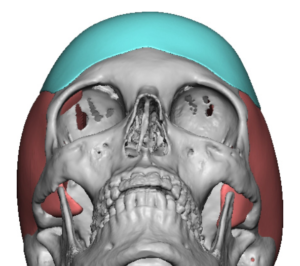
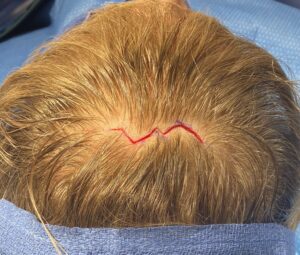
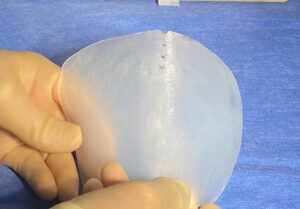

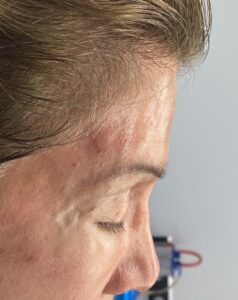

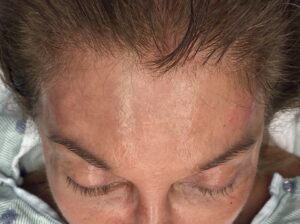
Case Highlights:
1) Forehead augmentation in most females focuses on improving the vertical slope on profile and keeping more of a rounded shape.
2) Creating a completely vertical forehead requires the greatest thickness of the custom forehead implant to be at the upper 2/3 of the forehead.
3) A non-brow bone forehead implant can be placed through a relatively small scalp incision compared to the size of the implant.
Dr. Barry Eppley
World-Renowned Plastic Surgeon



